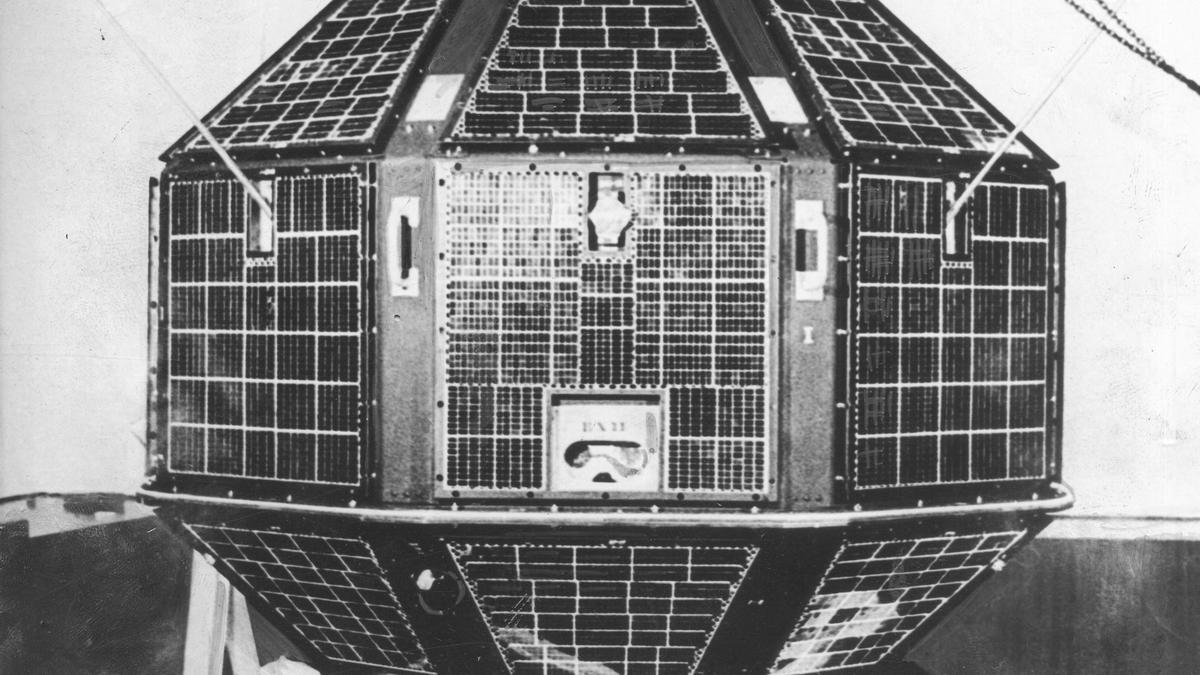
50 years since the launch of Aryabhata
The Hindu
Half a century has passed since India successfully launched Aryabhata, its first satellite, on April 19, 1975. This success proved to be the solid foundation for India’s space programme, which has grown by leaps and bounds in the five decades since. A.S.Ganesh takes you back to where it all started…
Named after an ancient Indian mathematician and astronomer (5th Century), Aryabhata was India’s first satellite. Launched from Kapustin Yar with the help of the Soviets on April 19, 1975, the launch of this indigenously-built satellite marked the beginning of India’s space age. The successful launch meant that India became just the 11th country in the world to send a satellite into orbit.
Aryabhata was designed as a 26-sided polyhedron that was 1.4 metres in diameter and weighed 360 kg. Barring the top and the bottom, each and every one of the 24 other faces were covered in solar panels.
Once in orbit, Aryabhata went around the Earth every 96.3 minutes. With an inclination of 50.7 degrees, the satellite went around in an orbit with an apogee (furthest point) of 619 km and a perigee (closest approach) of 563 km.
Tasked with conducting experiments in solar physics and X-ray astronomy, Aryabhata tasted minimal success (making observations of an X-ray source) before a power failure halted experiments after five days in orbit. In addition to providing scientists invaluable experience in building satellites, Aryabhata also collected information during its five operational days. It continued to transmit information for some more days. Aryabhata re-entered the Earth’s atmosphere on February 10, 1992 – corresponding to an orbital life of nearly 17 years.
While India’s satellite programme took shape in the 1970s, the scientists in the country had been gearing up for India’s indigenous space programme ever since the space race between Cold War rivals the U.S. and the Soviet Union had begun. In the 1960s, the Indian Space Research Organisation (ISRO) developed a series of sounding rockets for atmospheric and meteorological research under the Rohini rocket programme. Following this success, the ISRO turned their attention towards building our own satellites.
Vikram Sarabhai, physicist and ISRO’s founder, appointed a team of 25 scientists, engineers, and researchers to design and develop a satellite at the Physical Research Laboratory in Ahmedabad. Sarabhai entrusted space scientist Udupi Ramachandra Rao with the task of directing operations and assembling the satellite in Bengaluru.
Considering that Rao himself had only limited experience with regard to making a satellite, the young team that had been put together had to learn on the fly. While this is no easy task in any industry, it was probably doubly difficult in rocket science.

 Run 3 Space | Play Space Running Game
Run 3 Space | Play Space Running Game Traffic Jam 3D | Online Racing Game
Traffic Jam 3D | Online Racing Game Duck Hunt | Play Old Classic Game
Duck Hunt | Play Old Classic Game











